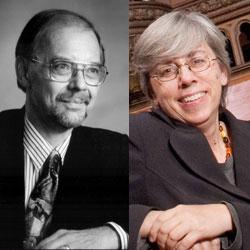
First Congregational Church (UCC), Crystal Lake, Illinois, presents its annual Wesley M. Vos Memorial Organ Recital on April 28, 4 pm, featuring Gail Archer.
The series is presented in memory of Wesley M. Vos, who served as associate editor of The Diapason from 1967 to 2002, professor of music at DePaul University, Chicago, and was a member of the First Congregational Church.
For information: 815/459-6010; www.fcc-cl.org.

